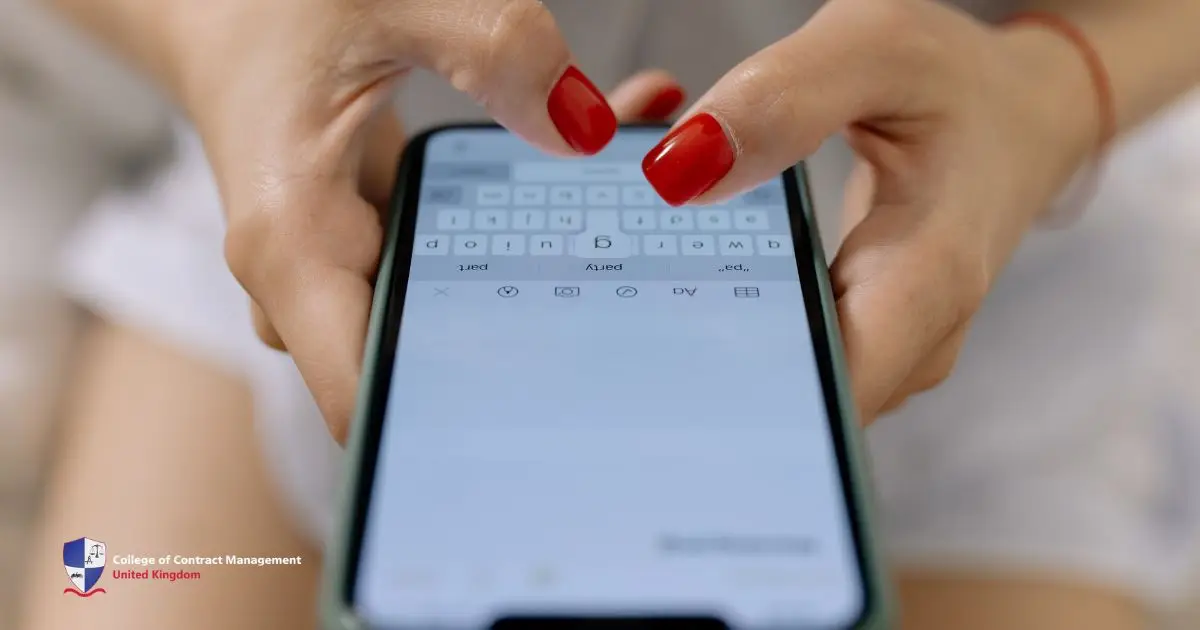In a workplace environment, communication skills are a must-have. Assigning tasks, receiving instructions from higher-ups, and general collaboration with team members are all too common in a professional setting. However, without proper knowledge of using different types of communication, conflicts can arise. A poorly-written email can result in misunderstandings among co-workers. This could potentially delay project progress and push back deadlines.
Due to this, it's not only ideal to know about the types of communication but also to know how to communicate well if you wish to thrive in a team. Good communication skills can help you create more meaningful conversations. Whether you’re talking to one person, speaking to a group, or just organising your own ideas, the various types of communication can help you share your message clearly and easily.
What are the different Types of Communication?
The different types of communication are Verbal, Non-verbal, Written, and Visual. Each helps us share thoughts, feelings, and ideas in different ways. While they are similar in some ways, each type also has differences that make it useful in certain situations. Plus, these types can be used on their own, combined with others, or all together, depending on what you need.
Knowing how to use these four communication types will make it easier for you to participate in purposeful discussions and contribute your own ideas to keep the discussion going. Here, we delve deeper into how each type of communication is best handled, and what measures you can take to deliver your ideas properly.
Verbal Communication
From its name, verbal communication is the exchange of thoughts, feelings, and ideas using words. You can do it by speaking or writing. Moreover, this type of communication is one of the basic and commonly used because it is quick. Listed down below are the two modes of verbal communication.
- Oral Communication: Uses mouth and voice in conversation. This can be done directly like face-to-face or indirectly through phone calls. In addition, you can express emotions through the tone and volume of your voice.
- Written Communication: Uses words in writing in different forms. It can be through text, emails, or letters. Unlike oral which uses tone and volume to show emotion, one way to show emotion in writing is through punctuation marks.
Non-verbal Communication
Non-verbal Communication is one of the types of communication that does not use words. Because of the lack of words, Non-verbal communication has a lot of modes namely, Body language, Appearance, Silence, and Paralanguage. The tricky part about non-verbal communication is it can be done while you are aware, not aware, and semi-aware. Listed down below are the modes of non-verbal communication.
1. Body Language
Body language shows how we feel and think without using words. For example, your posture can show if you're feeling confident or nervous. Gestures, like waving or pointing, help you explain things better. Facial expressions like smiling or frowning show how you feel, while eye contact helps you connect with others. Touch can show support, and movement or body position can show interest. Even things like your breathing and proximity (how close you are to someone) can send messages.
2. Appearance
Your appearance says a lot about you too. How you look can show your personality, social status, or job. It can also tell people about your culture, health, or how old you are.
3. Silence
Sometimes, silence can speak louder than words. When you’re quiet, it could mean you’re thinking, feeling awkward, or showing respect. It might also mean you’re not agreeing, feeling sad, or trying to avoid a fight. On the other hand, silence can also mean you’re calm or unsure.
4. Paralanguage
Paralanguage is about how you say something, not just the words you use. For example, your tone of voice, pitch, and volume can change how people understand you. The speed of your speech and the pauses you take can also change the meaning of your message.
Written Communication
Although written communication is a mode of verbal communication, it is still considered one of the types of communication. It includes various forms, each serving different purposes. Additionally, written communication adds another layer, enabling messages to be preserved, referenced, and communicated to larger audiences across time and space. Below is the list of categories where methods of written communication are used.
Personal Communication:
- Letters: Personal notes or messages between individuals, such as thank-you letters or invitation letters.
- Text messages: Casual messages sent through mobile devices to communicate informally with friends or family.
Professional Communication:
- Emails: Formal or informal messages exchanged for work, business, or professional purposes.
- Reports: Detailed documents providing information, analysis, or recommendations, often in a work or academic setting.
- Proposals: Documents that offer a plan or suggestion for business or project collaboration.
- Memos: Short, formal notes used in a workplace to share information quickly within an organisation.
Public Communication:
- Articles: Written pieces intended to inform or entertain, published in newspapers, magazines, or online platforms.
- Blogs: Online posts that communicate ideas, stories, or advice, typically shared on websites.
- Social Media Posts: Short messages or content shared on platforms like Facebook, Twitter, Instagram, or LinkedIn.
Legal Communication:
- Contracts: Formal agreements that outline the terms of a deal, including responsibilities and obligations.
- Agreements: Legal documents that specify terms of understanding between parties.
- Wills: Legal documents outlining a person's wishes regarding property and estate distribution after death.
Creative Communication:
- Books: Written works of fiction or nonfiction that communicate ideas, stories, or knowledge.
- Scripts: Written documents for movies, plays, or television shows that outline dialogues and actions.
- Poems: Creative expressions of emotions and ideas in verse form.
Visual Communication
Another one among the types of communication is Visual Communication. Visual Communication is when you use pictures, colours, shapes, videos, and other visuals to share a message or idea. Instead of just talking or writing, you can show things through images or designs to help people understand faster.
Uses of Visual Communication
- Social Media: Posting pictures, videos, or infographics to share ideas, tell stories, or entertain.
- School Projects/Office Presentation: Using diagrams, charts, and images in presentations or reports to make your work easier to understand.
- Advertising: Creating ads with visuals like logos, posters, and videos to grab attention and promote products or services.
- Websites: Using pictures, icons, and videos to make websites more interesting and easier to navigate.
- Movies & Videos: Telling a story through visuals like scenes, lighting, and camera angles.
- Signs & Symbols: Using things like street signs, safety symbols, or emojis to quickly communicate messages.
- Branding: Creating logos and designs that represent a company or product visually, like the Nike swoosh or McDonald's golden arches.
Effective Communication Skills
Along with the types of communication, effective communication skills also help you to deliver your message. However, if you look up communication skills online, you'll see lots of ideas that can be confusing. But you don’t need to know everything to be a good communicator. Just focus on the basics! Think of S.P.E.A.K. as a helpful guide to communicate with others. Here's what each letter means:
- S – Speak Clearly and Directly: Use simple words and speak clearly so that the other person can understand you. Always think about what words they will get, so your message makes sense to them. Remember, the goal of communication is to understand and to be understood.
- P – Present Details: Share important details so people can really understand what you're talking about. Give examples that make things clearer for them. Using comparisons, like analogies, can also help explain things. If something is too hard to understand, try comparing it to something simpler that they already know.
- E – Express the Truth: Always tell the truth because that’s how you build trust with people. Lying isn’t good, so make sure you know the truth before sharing something with others.
- A – Always Listen: Communicating is not always about talking. Pay attention when someone else is talking, and think about what they’re saying before you speak. Listen to understand and not just because you want to say something back.
- K – Kindness: Be kind and respectful to others, even if you don’t agree with them. Treat them the way you would want to be treated. Keep your tone calm and polite, because how you say something matters just as much as what you say. If you stay respectful, it shows maturity and helps keep the conversation positive and productive.
Communication Skills in a Workplace Setting
Workplaces are made up of all kinds of people with different backgrounds, personalities, and ideas. With so many different ways of thinking, it’s easy for things to get mixed up if we’re not careful. Effective communication is what helps everything run smoothly, whether it’s sharing ideas, giving feedback, or just making sure everyone is on the same page. Without it, even the best teams can struggle. Let’s take a look at some important communication skills you can use in different types of communication that can help make any workplace better.
- Active Listening:
Focus on what the other person is saying, and respond thoughtfully to show you understand. - Clarity and Conciseness:
Keep your message short and direct to avoid confusion and save time. - Adaptability:
Change how you communicate depending on the person or situation to make your message more effective. - Politeness:
Be respectful and considerate in your communication to create a friendly environment. - Constructive Feedback:
Offer suggestions for improvement in a positive way that encourages growth. - Confidence and Assertiveness:
Share your thoughts confidently and clearly, while respecting others' viewpoints.
Discover the Types of Communication at the CCM
Understanding the different types of communication is important for building good connections in the workplace. It helps build trust and creates harmony among people. As a result, people work better together and solve problems more easily. In addition, when people understand each other, they can share ideas clearly, which leads to better teamwork and stronger outcomes.
At the College of Contract and Management, we believe communication is very important. That’s why we use all four types—verbal, non-verbal, written, and visual—to help us understand your goals and support you as you learn. By combining these types of communication, we make sure you get the best learning experience. Whether you want to improve your skills or start a new career, we are here to guide you every step of the way.




